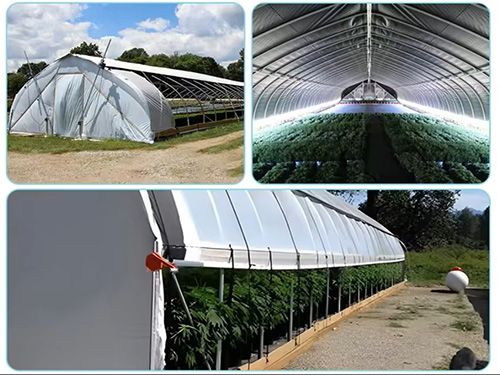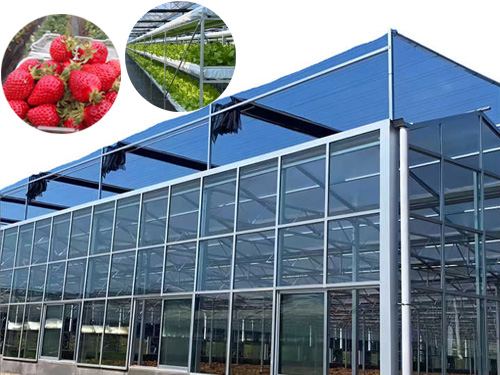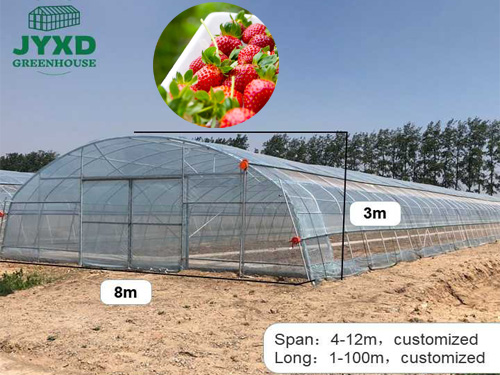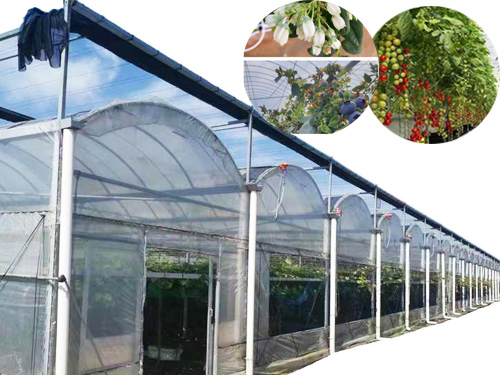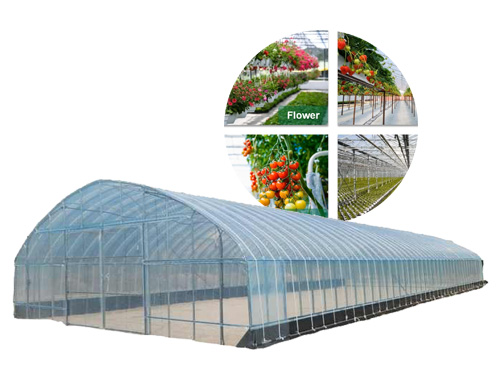NEWS DETAILS
NEWS INFORMATION
Greenhouses in Humid Climates: Solutions for Mold Prevention and Air Circulation
AUTHOR:jyxd-greenhouse DATE:2025-03-05 16:44:25 HITS:177
In humid climates, greenhouses face unique challenges that can hinder plant health and productivity. High humidity levels, if not properly managed, can create the perfect environment for mold, mildew, and other fungal diseases. Additionally, inadequate air circulation can lead to stagnant conditions that further exacerbate these issues. For greenhouse growers in regions with high humidity, effective mold prevention and optimal air circulation are essential for maintaining healthy crops. This article explores the solutions for preventing mold growth and improving air circulation in greenhouses located in humid climates.
1. The Impact of Humidity on Greenhouses
Humidity plays a significant role in plant growth, but excessive moisture in the air can cause numerous problems in a greenhouse. High humidity levels can lead to:
• Mold and Mildew Growth: Mold thrives in moist, stagnant environments, and greenhouses with insufficient ventilation are at risk of fungal infestations.
• Reduced Plant Health: Excess moisture on leaves and soil can lead to root rot, leaf spots, and other plant diseases.
• Poor Air Quality: Stale air can create unhealthy conditions for both plants and workers, making the greenhouse environment less effective for growth and productivity.
Thus, controlling humidity and maintaining proper airflow are critical for preventing these issues and ensuring the success of a greenhouse operation.
2. Mold Prevention Strategies in Humid Greenhouses
Mold is one of the most common issues in greenhouses with high humidity. Preventing mold growth involves a combination of environmental control, sanitation practices, and pest management.
Proper Ventilation
Adequate ventilation is essential for preventing mold in greenhouses. Without proper airflow, moisture builds up, creating conditions conducive to fungal growth. Strategies for improving ventilation include:
• Roof and Side Vents: Install adjustable roof vents to allow warm, moist air to escape from the top of the greenhouse, while cooler air is drawn in through side vents at the base.
• Automated Ventilation Systems: Automated systems that open and close vents based on humidity and temperature levels help maintain consistent airflow without manual intervention.
• Louvered Windows: These windows can be strategically placed to improve cross-ventilation and enhance air circulation.
Dehumidification
Controlling humidity levels inside the greenhouse is key to preventing mold growth. Dehumidifiers and climate control systems help reduce excess moisture in the air. Some effective methods for managing humidity include:
• Desiccant Dehumidifiers: These systems use materials that absorb moisture from the air and can be particularly effective in smaller greenhouses.
• Air Conditioning: In combination with ventilation, air conditioning units can lower the humidity and maintain optimal growing conditions.
• Humidity Control Systems: Installing a humidity control system that automatically adjusts the moisture levels based on the set parameters ensures a balanced environment for plant growth.
Airflow Enhancements
Stagnant air encourages mold growth, so ensuring constant air movement is crucial. Some methods to improve airflow include:
• Oscillating Fans: Installing fans throughout the greenhouse can help circulate air, prevent hotspots, and reduce humidity levels on plant surfaces.
• Circulation Fans: In addition to exhaust fans, circulation fans help keep air moving evenly throughout the greenhouse, preventing localized humidity buildup.
• Fan Placement: Position fans near humid areas, such as near irrigation systems or high-moisture zones, to facilitate even airflow and moisture distribution.
3. Using Fungicides and Biological Controls
While environmental control is critical, using fungicides and biological control methods can help manage mold and mildew in high-humidity conditions.
• Fungicides: Regularly applying fungicides, either as a preventive measure or when mold is detected, can help keep fungal growth at bay. Organic options, such as neem oil or copper-based fungicides, are effective and safe for use in food-growing environments.
• Biological Controls: Beneficial microorganisms, such as Trichoderma and Bacillus subtilis, can be introduced to compete with harmful fungi and prevent their spread. These natural agents reduce the need for chemical treatments and are safe for both plants and the environment.
4. Effective Irrigation Practices to Prevent Excess Moisture
Proper irrigation is essential to avoid excess moisture that can contribute to mold growth. Here are some strategies for maintaining optimal soil moisture while reducing the risk of mold:
• Drip Irrigation: Drip irrigation delivers water directly to plant roots, minimizing excess moisture on the leaves and reducing the likelihood of fungal growth.
• Irrigation Timing: Watering plants in the morning allows excess moisture to evaporate before the cooler nighttime temperatures set in, preventing condensation and mold formation.
• Avoid Overwatering: Overwatering creates waterlogged conditions that promote mold growth. Ensure plants receive only the necessary amount of water to maintain healthy root systems.
5. Greenhouse Design Considerations for Humid Climates
The design of the greenhouse itself can play a significant role in preventing mold growth and ensuring proper airflow. Consider the following design elements:
• Roof Design: A greenhouse roof that allows for adequate ventilation, such as a sloped roof with built-in vents, helps warm air escape, preventing humidity buildup.
• Material Selection: Choose materials that allow for light diffusion while still offering sufficient ventilation. Polycarbonate panels, for instance, offer both insulation and ventilation properties, helping regulate temperature and humidity.
• Flooring and Drainage: A well-drained greenhouse floor reduces excess moisture buildup. Use gravel or permeable materials for flooring to ensure water drains away from plant areas, preventing stagnant conditions.
6. Regular Maintenance and Sanitation
Keeping the greenhouse clean is vital for mold prevention. Regular cleaning helps remove mold spores, debris, and other organic matter that can contribute to fungal growth. Key sanitation practices include:
• Cleaning Surfaces: Regularly clean benches, trays, and equipment with disinfectants that are safe for plants.
• Removing Plant Debris: Dead leaves and other plant matter should be removed promptly to avoid creating a breeding ground for mold.
• Inspecting for Early Signs of Mold: Routinely inspect plants for any early signs of mold or mildew and address the issue immediately to prevent spread.
Conclusion
Greenhouses in humid climates require a proactive approach to mold prevention and air circulation management. By ensuring proper ventilation, humidity control, and airflow, growers can create an environment that supports healthy plant growth while minimizing the risks associated with mold and mildew. Implementing best practices in irrigation, greenhouse design, and sanitation will further reduce the likelihood of fungal problems, ensuring consistent crop production and a healthier growing environment.
Would you like additional insights on greenhouse ventilation systems or solutions for humidity control?
Hebei Juyou Xinda Greenhouse Facilities Co.,Ltd.
Copyright © 2024-2025 https://www.jyxd-greenhouse.com. All Rights Reserved Hebei Juyou Xinda Greenhouse Facilities Co.,Ltd.Copyright





 Current Location:
Current Location:


